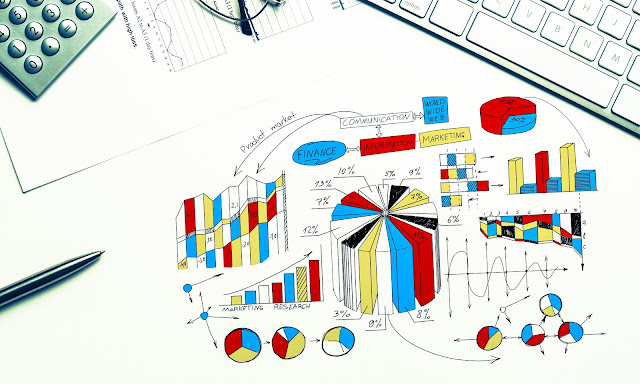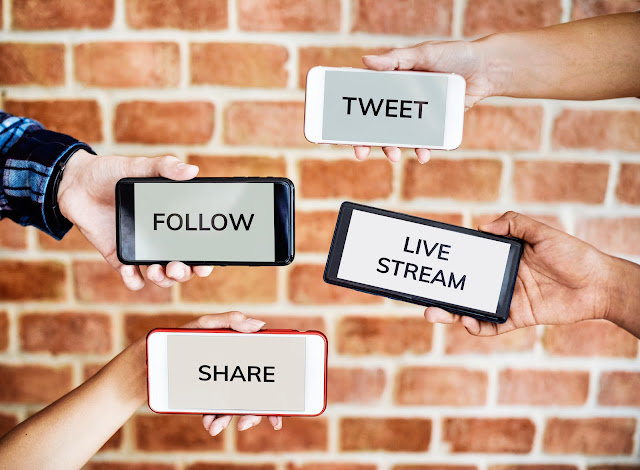 |
Marketing & Sales Funnel
|
Is it a marketing funnel or is it a sales funnel? It really is both. Both need to work together to capture as many leads as possible (Marketing), Nurture them (Marketing and Sales), and Convert them into customers (Sales). But even then the job isn’t over. We need to maintain and strengthen our relationship so they keep coming back, and becoming raving fans (Customer Service).
In the age of digital marketing where we can monitor and track our marketing and interactions with customers, the marketing and sales funnel has become a powerful tool for businesses.
This week’s content will explore what a funnel is, how it works, and discuss the marketing activities businesses can use in their marketing funnels, to convert more of their leads into paying customers.
What is a marketing & sales funnel?
The Marketing and Sales Funnel is a model & framework to simplify and quantify each step of the customer journey. It is the process of turning a lead into a customer, from a marketing (and sales) perspective. From the awareness stage when someone learns about the business, to the purchase stage, to post-purchase — satisfaction, word of mouth and customer retention. A funnel is a fundamental way for any business to model their marketing and sales systems to work together to first connect with a lead and then convert that prospect into a customer.
The funnel works together holistically, so every phase needs to align and work together to make the buyer journey to the bottom successful.
“The marketers` goal is to funnel prospects into buyers, moving them from the top to the bottom of the funnel. The shape reflects the fact that a large number of people will never complete the journey through the funnel.” (Sapian & Vyshnevska, 2019)
A big advantage of using a funnel is you can map out your process and measure any week points in your marketing and sales systems. If they are not moving from one stage to the next, you can tweak your email copy or increase your content marketing, or wherever you are not having the impact to move customers to the next phase.
Analysis of data allows a business to learn how they can better “influence” or persuade a consumer at each phase.
Like a funnel, at the top, you try to capture as much volume as you can. Like fishermen throwing a net out wide to capture as many fish as possible. As prospective customers go through the purchasing decision, there is a reduction of numbers at each level. As the shape suggested, every single lead is not going to be converted. But you can make continuous tweaks to improve your result as you get to understand the process better.
“A Marketing Funnel is a way to frame other marketing strategies and understand how the customer interacts with a company.” (Sapian & Vyshnevska, 2019)
Example of a funnel
An example of a basic funnel is as follows. And it is a basic funnel! There are some overly complicated funnels out there, but I do not want to over-complicate things. I will use an example from when I was in real estate for four years before starting this business.
· First, I post on LinkedIn about a local infrastructure update that was in the news or something that would be of interest to local businesspeople.
· When they are on my website, the read the article, and there might be a pop up before they leave to join a mailing list for local news/updates.
· Even if they do not join the mailing list, a tracking/marketing pixel can start marketing to them on Facebook or other social media with targeted paid advertising.
· They might then start following my Facebook page.
· They might then see a house for sale on one of my posts that they are interested in and come to an open home.
· If they do not buy that house, they supply their phone number at the open home.
· I call them to ask for feedback for the house and build rapport and after following the usual script of Are you looking to upsize or downsize? Have you had an agent look at your house yet?
· They then later agree to sell their house with you, and you sell them their new house.
· They enjoyed their experience. You email them quarterly with market updates and local news. You send them a Christmas card every year and call them once or twice.
· 5 years later, they sell with you again.
· This is the best case scenario obviously, but an example of how a funnel can work from the top to the bottom.
History of the Marketing Funnel
The funnel originated over 100 years ago, with ideas from two people — John Dewey and Elias St. Elmo Lewis. John Dewey introduced the Buyer Decision Process, which is still relevant today in understanding buyer behaviour. There are five stages: Problem Recognition, Information Search, Alternative Evaluation, Choice, and Outcomes.
Elias St. Elmo Lewis was even more influential, introducing the AIDA (attention, interest, desire, and action) model of customer persuasion, to help illustrate the stages of a customer’s relationship with a business. Still commonly used today, the model puts the purchase process into four stages.
 |
The AIDA Model
|
· Awareness: The prospect is aware of their problems and practical solutions for them. Marketing attracts customer attention to the product. The customer becomes aware it is available.
· Interest: The prospect shows interest in a group of services or products. Marketing develops an interest in a product or service.
· Desire: The prospect begins to evaluate a certain brand. Marketing develops a desire to own a product. The customer wants it.
· Action: The prospect decides whether to purchase. Marketing prompts action to purchase the product.
Originally, many funnels only included aspects up to a sale, but as we have begun to understand the importance of customer retention, models have included aspects of customer service and post-purchase factors such as “loyalty” and “advocacy” to help improve marketing strategy.
The design of marketing funnels differs depending on the context. For example, between business to business and business to consumer. Although the steps might be similar, the execution will differ.
“The firm is going to need a well-devised sales funnel that will effectively guide the target audience throughout the purchase process and turn them into buying customers.” (Sapian & Vyshnevska, 2019)
Developing a marketing and sales funnel
The process of developing a funnel that works is easier said than done. There are businesses set up that concentrate solely on online funnels. This was not the case ten years ago.
Businesses need to thoroughly develop a marketing plan for executing each stage of the funnel to yield their desired results. We need to consider each step’s role in generating a positive buyer journey through the funnel. Leverage what we learn through analytics to tweak the marketing at each step.
 |
Setting a marketing strategy
|
Important Tools for digital marketing sales funnels
Sales teams and marketers have never quite agreed on whose funnel it is, and how much control each should have. In the age of digital marketing, marketers have taken most of the control, leaving sales to look after the bottom of the funnel. But, to work together efficiently, they should meet somewhere in the middle. The Cross-sell or upsell goal is popular with digital marketing and having a product available for every step of the buyer’s journey.
Digital marketing is a powerful tool across an entire marketing funnel. Tactics used via social media are helpful for brand awareness at the top, to content marketing in the middle, to customer relationships at the bottom. These are digital marketing tools useful in marketing and sale funnel.
· Social media is a crucial tool to use at the start of the funnel for building brand awareness, but it also great for customer retention and keeping people engaged in your brand.
· Email is a powerful tool in a funnel and can be effective at every stage, especially in the retention stage.
· User Reviews are often the deciding factor on whether the purchase is made. Roughly half of the people find the information in a user review more important than any marketing material.
· Website and SEO are important in the awareness phase — you want to get traffic to your website. Creating SEO friendly content such as blogging and getting backlinks will help.
· Lead magnets are a valuable piece of information given in exchange for contact information (usually an email address). This could be a free e-book or whitepaper for example.
“Cutting through clutter now requires more-imaginative and sophisticated use of social tactics across the marketing funnel, including the integration of social with paid media. Simply raising awareness through social has become a more sophisticated and rapidly changing exercise in which new approaches can make an impact and then become passé in a matter of weeks.” (Deal, 2014)
Phases of the Marketing and Sales Funnel
These are the six phases of a sales and marketing funnel. There are several variations on the marketing and sales funnel, but they all follow the same methodology. I have created this example based on the common components of popular versions of the funnel. The six levels are: Awareness & Problem Recognition, Interest & Information Search, Consideration & Evaluation, Intent & Commitment, Conversion & Purchase, and Loyalty & Advocacy.
1. Awareness & Problem Recognition (TOFU)
The first step in marketing and sales funnel is Awareness and problem recognition. When a person recognises a certain need they have, this is the trigger for the first phase of a marketing and sales funnel. This is the lead generation phase. A brand must attract the attention of potential customers, so they are aware that it is available. A prospect must become aware of two things, problems of customers and solution of the company. This is where a business needs to throw its marketing net wide and have a presence in places where its target market spends time to try and capture their attention. Try to engage with potential customers.
Position yourself / your brand as a thought leader in your industry through marketing activities such as SEO, social media, advertising, events, content marketing. This establishes the initial trust.
This recognition of a problem or need triggers a search for more information.
 |
Social media is a great tool to increase brand awareness
|
2. Interest & Information search (TOFU)
Once Marketing has created awareness and interest in a product, brand or service, we move into the interest and information search phase. Consumers learn more about a company or brand and its offering. Your content marketing continues in this phase and is more information and value-based than basic brand awareness. Here you position your brand in the minds of potential customers and start to develop and nurture a relationship. You also start to introduce customers to your services.
“Using tailored landing pages, webinars, newsletters, testimonials, customer guides, online videos, media interviews, blogs, and even customer service training is a perfect way to get consumer interest.” (Sapian & Vyshnevska, 2019)
Nurture leads through more targeted marketing such as email marketing, Case studies, e-newsletter, whitepapers, “how-to video”, webinar, and targeted ads. The goal is to reinforce that the prospect is in the right place and guide customers towards what they need to know about the offering.
Here you position yourself as an expert in your industry with your content marketing strategy that provides useful information that helps people, no strings attached. Whoever your target audience is, centre this content around helping them with their problem. Help your audience understand that you can solve their problems.
You can do keyword research through Google Trends, and other tools will give you an indication of what types of searches people are doing related to your industry. You can then create content that matches those queries.
You want to understand the reasons a customer would have for choosing your company’s product or service. Each search phase will be contextual. Buyers will search for a solution on Google or another search engine like social media. The amount of time and energy that put into this phase depends on the product or service. It could be a voice search on Maps for nearby cafes for example, or they could visit numerous stores for a larger purchase like a car.
3. Consideration & Evaluation (MOFU)
Following the information search, the next phase of the funnel is consideration and evaluation. This is what Elias St. Elmo Lewis referred to as “desire”, and some models refer to this as “Middle of the Funnel”. A consumer starts forming their decision at this point, so businesses should nurture their leads as they have become more qualified. At this phase, Marketing must develop a desire to own or have the product.
Emailing is more regular at this phase, and case studies are a useful tool to highlight your previous success and increase your credibility. Marketing content contains more product information, and you might give exclusive offers to these leads. A low cost or even free e-book is another tool at this phase. Resources like pricing guides and “how-to” guides are useful for marketers to keep the attention of leads at this phase. Having copy on your website covering things such as FAQ and Shipping also helps gives peace of mind, and if you can provide powerful social proof.
Depending on the type of product or service, the time spent at each stage varies. It could be a snap decision for something like fast food. A large investment will take a careful and thorough evaluation process. This is often the longest phase in a funnel, lasting weeks or even months. Marketers must consistently reinforce their relationship with the customer and give them the necessary information they are using to evaluate this decision.
4. Intent / Commitment (MOFU)
After the consideration phase, leads move onto intent & commitment. They are ALMOST a customer. These people have demonstrated some interest in buying a product or service. Marketers offer free trials, demonstrations, consultations and arrange sales meetings with people at this phase as they are ready to go. They might have left a product in a cart on the website. They have shown strong intent to consume. Marketers to make a compelling case for why their product is the best choice for a buyer.
This is also where the sales team would take over, and marketing can be more direct at this phase to help people make their final decision. Ideally, marketing and sales tactics work together to nurture the decision-making process and convince the buyer.
5. Conversion / Purchase (BOFU)
If consumers reach the Bottom of the Funnel, they have decided to buy, and become a customer. Congratulations! The customer has gone through all the phases — determining they have a problem and deciding you provide the solution.
The Conversion and Purchase phase is where sales processes have control of the customer. The aim is to make the purchasing process online as simple, safe and efficient as possible. Reduce any risk for the customer. The customers can also be cross-sold or up-sold to a more expensive product or service.
If this stage is effective and efficient, and customers are happy with their purchase, then this phase should mostly take care of itself.
 |
Customer online shopping
|
6. Loyalty & Advocacy (BOFU)
What happens after the sale is key, but many companies fall short at this phase. Simply happy to make the sale, they let many potential future customers just walk away. We want to retain our best customers. The cheapest path to conversion is through existing customers. Loyalty and Advocacy is the final phase of a marketing funnel.
“And one last thing to remember, buyers can always finish the action or purchase but still be left frustrated, confused, or upset. A truly positive experience at this stage in the funnel means the marketers have moved the customer closer to the advocacy and loyalty stage.” (Sapian & Vyshnevska, 2019)
Emailing and social media are great tools to use at this point to stay in touch with customers and keep nurturing that relationship. You can send the odd offer and keep the customer aware of what you are selling, but mostly you want to create value to try and create a bond with that user, so they advocate on your behalf. Word of mouth is a powerful marketing tool and it is free! Try to create “raving fans” who will become loyal advocates for your brand.
But do not expect the time and effort you should put into this phase to be free. Create a brand promoter.
That is it for another blog! I hope you find this useful and use this knowledge to start creating some marketing content for your business! If you found this useful, check out 50 weeks of marketing
See you next week,
Dan





















